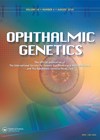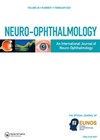
Journal Reviews
Intravitreal Aflibercept (IVT-AFL): treatment of macular oedema secondary to RVO
This paper is a sub-group analysis of the real-world effectiveness, treatment patterns, and safety of IVT-AFL in patients with macular oedema secondary to retinal vein occlusion (RVO) in Italy. One hundred and fifity-two treatment-naïve and 50 pretreated patients were enrolled...
Understanding the pachychoroid disease spectrum
This article provides a comprehensive review of the pachychoroid disease spectrum, a group of chorioretinal disorders characterised by abnormal choroidal thickening and various pathological changes in the choroid, retinal pigment epithelium, and retina. It also highlights the controversies and knowledge...
RCT of surgery to correct asymmetrical DVD
This study compared the efficacy of two procedures: (1) bilateral symmetrical anteriorisation of the inferior oblique (AIO) and (2) combined resection and AIO, in cases of asymmetrical dissociated vertical deviation (DVD). This was a prospective randomised controlled trial including 54...
Outcomes in intermediate age-related macular degeneration (AMD): A MACUSTAR study report
Intermediate AMD (iAMD) is the most high-risk AMD stage for progressing to late AMD. This article gives the report of the MACUSTAR study. A wide range of assessments were conducted across 20 sites in seven European countries, in accordance with...
Reproductive counselling for females with X-linked inherited retinal diseases
The authors report a survey-based study of 118 female patients who were genetically confirmed carriers or obligate carriers of an X-linked inherited retinal disease. The majority (66.9%) of these patients were carriers of choroideremia; other diagnoses included retinitis pigmentosa, X-linked...
Corneal surface astigmatism changes after lateral rectus surgery
This prospective study evaluated astigmatic changes in children following lateral rectus surgery. The fellow unoperated eye was used as the control for assessment of anterior and posterior corneal surfaces. The study included 37 patients (74 eyes); 16 male, 21 female...
Aetiology of painful ophthalmoplegia
Painful ophthalmoplegia is a clinical syndrome presenting with periorbital / hemi-cranial pain and ipsilateral ocular motor nerve palsies and can occur with numerous different diseases. In this study, the authors aimed to determine the final definite aetiology among patients with...
How common are carotid-cavernous fistulas and what are the neuro-ophthalmic manifestations?
The authors present a retrospective study using the Rochester Epidemiology Project database. The aim was to establish the incidence of carotid-cavernous fistulas (CCF) and outline the associated neuro-ophthalmic patterns. Cases were identified from the database using the following criteria: a...
Photophobia associated with migraine: Investigating associations with productivity
The aim of this study was to investigate an association between severe photophobia linked to migraine and reduced work productivity. Cases were extracted from the American Registry for Migraine Research (ARMR) with the following criteria: diagnosed with migraine, data available...
Developing a data registry for neuro-ophthalmology with quality assurance measures
The authors aimed to report the scope of neuro-ophthalmology clinics in Australia, referral patterns and develop a quality assurance framework for referrals. Cases were identified from a single tertiary neuro-ophthalmology centre. Data was prospectively collected into the National Neuro-ophthalmology Database...
Vitreoretinal lymphoma: The importance of cerebral spinal fluid evaluation at initial diagnosis
This is a retrospective single centre case observational study between 2006 and 2024 at Memorial Sloan Kettering Cancer Center, to review patients with biopsy-proven central nervous system lymphoma and MRI brain evaluation. Sixth-five patients were included in this study, 11...
Anatomical measurements for degree orientation and muscle insertions for rectus muscles
This study reports the relative degree orientation of the superior, lateral and inferior rectus muscles with respect to the medial rectus, and the distances between the rectus muscle insertions. The study involved 30 cadavers (60 eyes), all White, 50% female...












